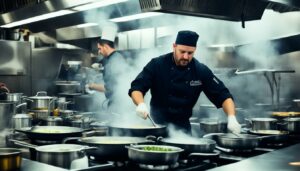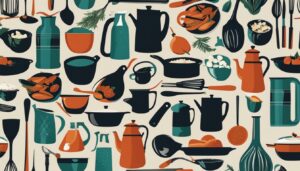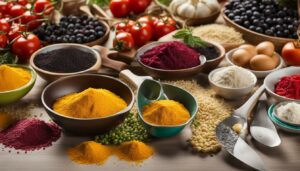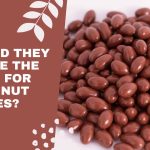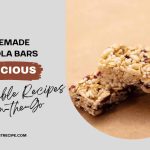Originally posted on March 26, 2024 @ 7:41 pm
Have you ever wondered if recipes can be plagiarized? In a world filled with food blogs, social media platforms, and countless recipe sharing websites, it’s essential to understand the rights and protections surrounding recipe creations. While copyright law offers safeguards for various forms of creative works, the realm of recipes presents unique challenges. Are creators truly protected from recipe plagiarism, and what are the consequences for those who violate recipe copyrights?
Join us as we delve into the intriguing world of recipe intellectual property rights. Discover the limitations of copyright protection for recipes, explore the debate surrounding recipe copyrights, and learn about the rise of recipe plagiarism in the digital age. We’ll also discuss practical steps recipe creators can take to prevent content theft and safeguard their culinary creations.
So, can recipes be plagiarized? Let’s uncover the truth behind the legalities and consequences of recipe copyright infringement.
Contents
- 1 Understanding Recipe Copyrights and Plagiarism
- 2 Recipe Plagiarism in the Digital Age
- 3 The Debate on Recipe Intellectual Property Rights
- 4 Safeguarding Your Culinary Creations
- 5 The Importance of Creative Expression in Recipes
- 6 Challenges in Proving Recipe Plagiarism
- 7 Best Practices for Recipe Writers and Bloggers
- 8 Copyright Protection for Cookbooks
- 9 The Role of Copyright Education and Awareness
- 10 Conclusion
- 11 FAQ
- 11.1 Can recipes be plagiarized?
- 11.2 How can I prevent recipe plagiarism?
- 11.3 What are the consequences of recipe plagiarism?
- 11.4 How can I protect my recipe copyrights?
- 11.5 Are there challenges in proving recipe plagiarism?
- 11.6 What are the best practices for recipe writers and bloggers to avoid plagiarism?
- 11.7 Are individual recipes protected under copyright in cookbooks?
- 11.8 How important is copyright education and awareness in addressing recipe plagiarism?
- 11.9 How can creators safeguard their culinary creations?
- 11.10 What is the role of creative expression in protecting recipes?
- 11.11 Are there copyright protection challenges specific to recipe plagiarism?
- 11.12 How can recipe creators ensure their work is attributed to them?
- 12 Source Links
Key Takeaways:
- Despite copyright protections for various creative works, recipes face limited copyright coverage due to their factual and functional nature.
- The lack of concrete copyright protection makes recipe creators vulnerable to plagiarism and content theft.
- The digital age has facilitated the widespread sharing and copying of recipes, contributing to the growing problem of recipe plagiarism.
- The debate on recipe intellectual property rights remains unresolved, with arguments for and against recipe copyrights.
- While recipes themselves may not be copyrightable, creators can focus on protecting accompanying literary expression, illustrations, and creative aspects of their recipes.
Understanding Recipe Copyrights and Plagiarism
When it comes to copyright protection, recipes present unique challenges. While copyright law safeguards various forms of creative material, recipes are usually classified as factual and functional content, rendering them ineligible for copyright protection [1]. According to the Copyright Office, a mere list of ingredients or simple directions does not qualify for copyrightability [1]. Although certain recipes may be protected if they contain substantial literary expression or creative descriptions [1], this protection only extends to the expression of the recipe, not the facts themselves [1]. As a result, recipe creators face difficulties in safeguarding their intellectual property rights, making recipe plagiarism an increasingly prevalent issue.
“A mere listing of ingredients or simple directions is uncopyrightable.”
– The United States Copyright Office
Recipe plagiarism occurs when someone copies another person’s recipe without permission or proper attribution. The consequences of recipe plagiarism extend beyond the ethical implications, impacting the hard work and creativity of the original recipe creator. Plagiarism can lead to a loss of readership, diminished trust from the culinary community, and potential financial repercussions.
In order to address recipe plagiarism and safeguard the rights of recipe creators, it is important to understand the intricacies of recipe copyrights and the consequences of plagiarism. By raising awareness and promoting respect for recipe copyrights, we can nurture a culture that values and acknowledges the efforts of culinary creators.
Recipe Copyrights – The Factual and Functional Challenge
Recipes inherently contain factual and functional elements, such as the list of ingredients and cooking directions. These elements are considered essential for the creation of the dish and are not subject to copyright protection. However, copyright protection may be applicable to the original literary expression, creative descriptions, and unique presentation of the recipe [1]. While this protection may extend to elements such as stories, personal anecdotes, and accompanying illustrations, it does not encompass the factual aspects themselves.
For instance, a simple list of ingredients and basic cooking instructions for a chocolate chip cookie recipe may not be eligible for copyright protection. However, if the recipe includes a narrative about the history and inspiration behind the recipe, along with unique tips and variations, the accompanying literary expression may be subject to copyright.
| Type of Ingredient | Quantity |
|---|---|
| All-purpose flour | 2 cups |
| Butter | 1 cup |
| Sugar | 1 cup |
| Chocolate chips | 2 cups |
As seen in the example above, the list of ingredients and their quantities falls under factual and functional content. However, a recipe with a unique method of preparation, an engaging story, or innovative substitutions can incorporate copyrightable elements. It’s essential for recipe creators to focus on infusing their recipes with originality and creativity to maximize their copyright protection.
[1] – The United States Copyright Office. (n.d.).
Compendium of U.S. Copyright Office Practices
. Retrieved from https://copyright.gov/comp3/docs/compendium-full.pdf.
Recipe Plagiarism in the Digital Age
With the advent of technology and the widespread availability of digital content, recipe plagiarism has become increasingly prevalent in the digital age. Many food bloggers and recipe creators invest significant time, money, and effort into creating original recipes, only to have their work stolen and reproduced without permission. Online platforms and social media make it easier for plagiarists to copy and share these recipes, leading to a loss of readership and potential revenue for the original creators. The digital landscape has created new challenges for protecting recipe copyrights and preventing content theft.
As recipe creators strive to share their culinary creations with the world, they face the risk of online recipe plagiarism. Plagiarists can easily copy and paste recipes from one website to another, often without giving proper credit or permission to the original creators. This not only undermines the hard work and creativity of the recipe creators but also leads to a loss of trust and credibility within the culinary community.
Online recipe plagiarism not only affects individual recipe creators but also poses challenges to the entire food blogging and culinary industry. Plagiarized recipes can quickly go viral, gaining popularity and attention while the original creators remain unrecognized. This not only harms the reputation of the creators but also creates an unfair advantage for plagiarists who benefit from the hard work and expertise of others.
Furthermore, online recipe plagiarism can have a significant impact on readers and food enthusiasts. When recipes are stolen and reproduced without consent, readers may unknowingly rely on inaccurate or untested recipes, leading to disappointing results or even potential health risks. This undermines the trust and reliability of online recipe sources and diminishes the overall culinary experience for readers.
To combat recipe plagiarism in the digital age, both recipe creators and readers must be vigilant. Creators should take proactive measures to protect their recipes, such as using watermarks on images, implementing copyright notices on their websites, and monitoring online platforms for any instances of plagiarism. Additionally, readers can support original creators by actively seeking out and sharing recipes from trusted sources, respecting their intellectual property rights.
It is essential for the culinary community as a whole to promote awareness and education about recipe plagiarism, emphasizing the significance of originality and respecting the hard work of recipe creators. By working together and advocating for stricter regulations and ethical practices, we can create an environment that fosters creativity, innovation, and fair recognition in the digital age.
The Debate on Recipe Intellectual Property Rights
The issue of recipe intellectual property rights is a subject of debate in the culinary world. Some argue that recipes should be considered intellectual property and protected by copyright law, as they involve creativity, skill, and innovation. Others believe that recipes should remain in the public domain, as they are often passed down through generations and shared among communities. The lack of clear consensus on recipe copyrights further complicates the issue of recipe plagiarism and the protection of recipe intellectual property rights.
Safeguarding Your Culinary Creations
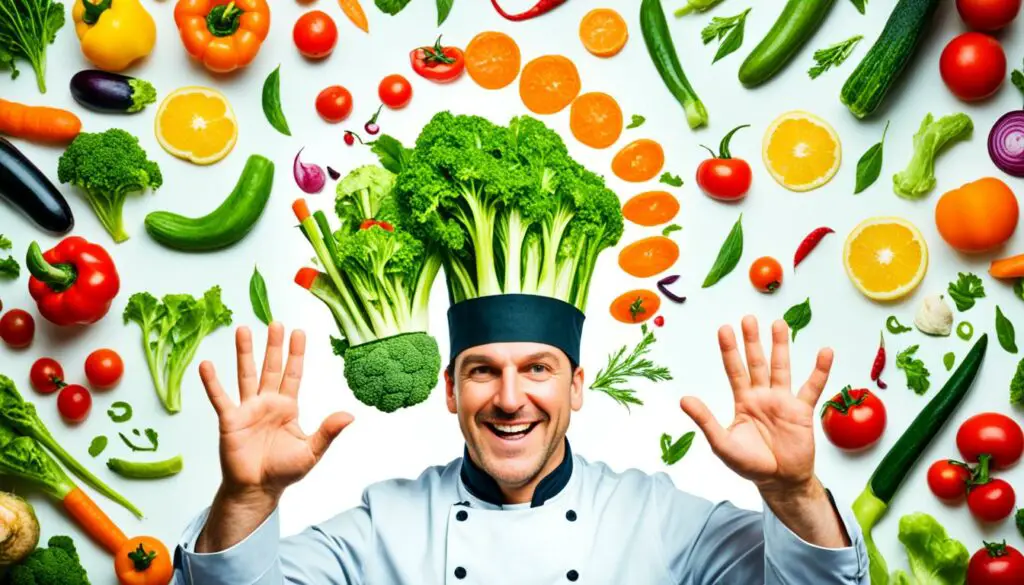
While recipe creators may face challenges in protecting their culinary creations, there are steps they can take to safeguard their work. Although recipes themselves may not be copyrightable, the accompanying literary expression, illustrations, and descriptions can be protected. Creators can use their creativity to make their recipes unique and distinguishable from others, focusing on the expression and presentation rather than the basic ingredients and directions. Additionally, creators can utilize copyright checkers and plagiarism detection tools to monitor and identify instances of recipe plagiarism.
“By emphasizing creativity and adding personal touches, recipe creators can make their culinary creations uniquely their own, making it more difficult for others to replicate their work while safeguarding their recipes.”
When it comes to protecting culinary creations, there are several strategies that recipe creators can employ:
- Create unique and engaging recipe descriptions: By using vivid language, storytelling techniques, and personal anecdotes, recipe creators can make their recipes stand out. This creative expression in the accompanying descriptions is eligible for copyright protection, adding an additional layer of safeguarding to their culinary creations.
- Utilize illustrations and photographs: Visual elements, such as hand-drawn illustrations or high-quality photographs, can add value and distinction to recipes. These visual elements can be subject to copyright protection, helping to prevent others from copying both the recipe and its artistic presentation.
- Add a personal touch: Infusing recipes with personal flair, such as incorporating cultural or regional influences, can make them difficult to replicate. By highlighting their unique culinary perspective, recipe creators can create a distinctive identity for their creations, deterring potential plagiarists who seek to replicate popular recipes.
Moreover, creators should consider utilizing technology to protect their work. Copyright checkers and plagiarism detection tools can help identify instances of recipe plagiarism, allowing creators to take appropriate action to protect their recipes. These tools compare published recipes against existing databases and publicly available content, providing insight into potential infringements.
“By leveraging technology, recipe creators can stay one step ahead of plagiarists, preserving the integrity and originality of their culinary creations.”
Benefits of Safeguarding Culinary Creations
Protecting recipe copyrights and preventing recipe plagiarism offer several benefits:
- Preserving originality: By safeguarding their culinary creations, recipe creators maintain the authenticity and originality of their recipes. This preserves their reputation as innovative creators within the culinary community.
- Maintaining market value: Safeguarding recipes ensures that creators can maintain the exclusivity of their creations, preventing others from profiting off their hard work and investment. This preserves the market value of their recipes and potential revenue streams.
- Fostering creativity: Knowing that their recipes are protected encourages creators to continue pushing boundaries, experimenting, and creating new and unique culinary delights. Safeguarding recipes inspires a culture of innovation and creativity within the culinary industry.
Comparison of Copyright-Safeguarding Strategies for Culinary Creations
| Strategy | Advantages | Disadvantages |
|---|---|---|
| Create unique recipe descriptions |
|
|
| Utilize illustrations and photographs |
|
|
| Add a personal touch |
|
|
| Utilize copyright checkers and plagiarism detection tools |
|
|
By implementing these strategies and staying vigilant, recipe creators can safeguard their culinary creations, prevent recipe plagiarism, and protect their recipe copyrights. Ensuring the preservation of originality and respecting the creative efforts of recipe creators ultimately benefits the entire culinary community.
The Importance of Creative Expression in Recipes
Creative expression plays a crucial role in safeguarding and enhancing recipes within the boundaries of copyright law. While the basic ingredients and directions of a recipe may be considered factual and ineligible for copyright protection, the accompanying description, explanation, and illustrations can be subject to copyright registration.
Recipe creators have the opportunity to leverage their storytelling skills, personal anecdotes, and unique presentation styles to add value and safeguard their culinary creations. By infusing their recipes with creative elements, creators can establish a distinct identity that sets their recipes apart and discourages potential plagiarists from copying their work.
Emphasizing creative expression in recipe writing allows creators to differentiate themselves and establish their unique voice in a saturated culinary landscape. By utilizing literary techniques, such as vivid descriptions and engaging narratives, creators can transform a simple recipe into a captivating culinary experience that resonates with readers.
Adding Value Through Creative Descriptions
Recipe descriptions serve as a vehicle for creative expression and can significantly enhance the appeal and uniqueness of a recipe. By infusing descriptions with personal anecdotes, cultural insights, or historical context, creators can elevate their recipes and make them more memorable and engaging for readers.
“Food is a universal language that transcends cultural boundaries. By weaving personal stories and cultural anecdotes into your recipe descriptions, you not only engage your readers but also create a connection that goes beyond the realm of ingredients and cooking techniques.” – Chef Emma Thompson
Creative descriptions allow recipe creators to showcase their expertise, passion, and unique culinary perspective, transforming a mere collection of instructions into a compelling narrative that captures the imagination of the reader.
Protecting Recipe Illustrations
In addition to creative descriptions, recipe illustrations play a vital role in protecting the visual representation of a recipe. Illustrations, whether hand-drawn or digitally rendered, can be copyrighted to prevent unauthorized reproduction.
Recipe creators can utilize their artistic abilities to illustrate their recipes, adding a personal touch and making them visually distinctive. These illustrations not only enhance the aesthetic appeal of the recipe but also contribute to its overall copyright protection.
By incorporating unique and original illustrations, recipe creators can further discourage plagiarism and establish a recognizable visual identity for their culinary creations.
| Benefits of Creative Expression in Recipes | Example |
|---|---|
| Enhances reader engagement and interest | Adding personal anecdotes to a recipe description captures the reader’s attention and creates an emotional connection. |
| Sets recipes apart from similar creations | Using unique spices and locally-sourced ingredients in a recipe adds an element of distinctiveness that sets it apart from generic versions. |
| Expands the recipe creator’s brand and following | By showcasing creative expression in recipes, creators can build a loyal and engaged audience that appreciates their unique culinary style. |
Challenges in Proving Recipe Plagiarism
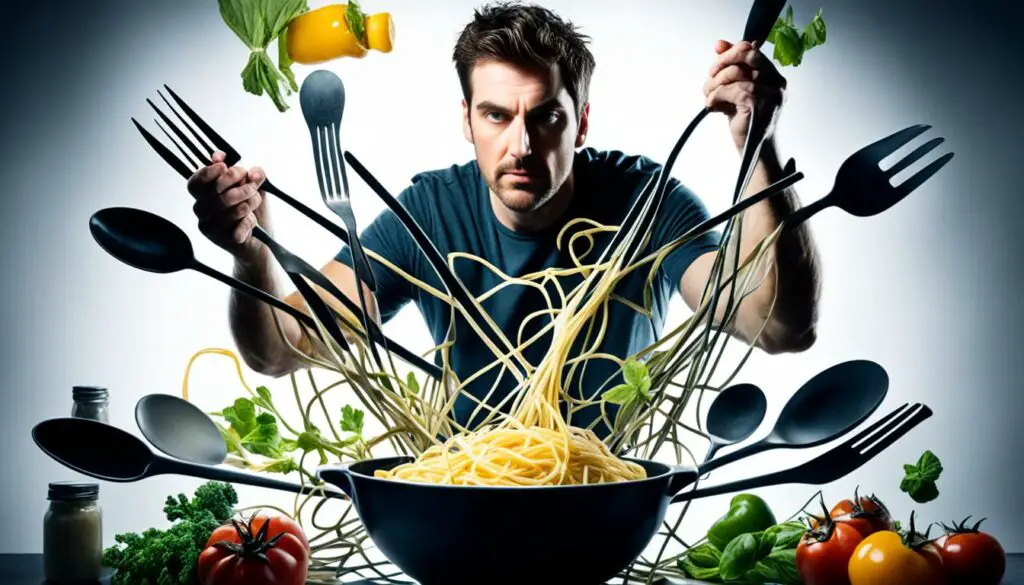
Proving recipe plagiarism can be a difficult endeavor, primarily due to the subjective nature of recipe writing and the ability of plagiarists to alter and modify the original work. Recipe creators often struggle to provide concrete evidence of copied recipes, words, or images, which makes pursuing legal action challenging.
The subjective nature of recipe writing makes it challenging to establish clear criteria for determining plagiarism. A recipe consists of a combination of ingredients, measurements, instructions, and personal touches that may be difficult to quantify objectively. Plagiarists can slightly tweak a recipe, making it hard to distinguish it from the original.
“Proving recipe plagiarism can be as complex as detecting variations in taste between two almost identical dishes.”
The lack of legal aid specifically tailored to recipe plagiarism contributes to the underaddressed nature of this issue. Many creators may not be aware of the legal options available to them or struggle to find the appropriate legal assistance to support their claims. This further adds to the difficulties in proving recipe plagiarism and holding plagiarists accountable.
Despite these challenges, recipe creators can take steps to protect their work and ensure their unique recipes are rightfully attributed to them. By keeping comprehensive records, including timestamps, of their recipe creations and any instances of unauthorized use or copying, creators can build a stronger case against plagiarists. Utilizing watermarking techniques, digital signatures, or blockchain technology can further enhance the traceability and authenticity of their recipes.
“Recording and documenting each step of your recipe creation journey can serve as vital evidence in proving recipe plagiarism.”
Furthermore, creators can actively monitor digital platforms, recipe-sharing websites, and social media channels where recipe plagiarism is most likely to occur. Regularly conducting searches using recipe plagiarism detection tools can help identify instances of copied recipes or suspicious similarities.
Despite the challenges, it is important for creators to remain vigilant and protect their intellectual property. With the right tools, evidence, and legal support, recipe creators can strive to curb recipe plagiarism and safeguard their original culinary creations.
Best Practices for Recipe Writers and Bloggers
As a recipe writer or blogger, it’s essential to implement best practices to protect your original content and prevent recipe plagiarism. By following these guidelines, you can safeguard your culinary creations and preserve the integrity of your work.
1. Emphasize Creative and Unique Presentation
Set your recipes apart by infusing them with your personal expression and style. Focus on providing creative and unique descriptions, anecdotes, or stories that complement the recipe. By adding your literary touch, you not only enhance the reader’s experience but also establish a distinct identity for your culinary creations.
2. Utilize Original Images and Illustrations
Enhance the visual appeal of your recipes by using original images and illustrations. Captivating visuals not only make your recipes more attractive but also add an extra layer of protection against potential plagiarism. Utilize high-quality photos or illustrations that are relevant to your recipe and showcase your creativity.
3. Leverage Copyright Checkers and Plagiarism Detection Tools
Take advantage of copyright checkers and plagiarism detection tools to identify any instances of copied or duplicate content. These tools help you monitor the internet for potential recipe plagiarism and take appropriate action when necessary. Regularly check your recipes and related content to ensure their integrity.
4. Write Clear Guidelines for Attribution
Include clear guidelines in your recipes or blog posts on how others can attribute your work properly. This ensures that if someone wants to share or adapt your recipe, they do so while giving credit to the original source. By setting clear expectations, you encourage others to respect your intellectual property rights.
5. Keep Updated Records
Maintain detailed records of your recipes and their publication dates to establish a timeline of your original creations. This documentation can serve as evidence in case of any copyright disputes or instances of recipe plagiarism. Keep digital or physical copies of your recipes, including drafts, revisions, and any related correspondence.
6. Stay Updated on Copyright Laws
Stay informed about copyright laws and regulations, especially those specific to the culinary industry. Understanding the legal landscape surrounding recipe copyrights can help you protect your work effectively and take appropriate action if your copyrights are infringed upon. Consult legal resources or seek professional advice when needed.
By implementing these best practices, you can minimize the risk of recipe plagiarism and maintain the exclusivity of your culinary creations. Protecting your recipe copyrights not only safeguards your work but also promotes a culture of respect among recipe writers and bloggers.
Copyright Protection for Cookbooks
Cookbooks, as compilations of recipes, can be eligible for copyright protection. The selection, arrangement, and coordination of the included recipes are considered creative elements that can be protected under copyright law. However, it’s important to note that copyright protection for a cookbook does not extend to the individual recipes themselves. The arrangement and selection of the recipes are protected, but copying an individual recipe or a few recipes from a cookbook may not be considered copyright infringement. Understanding the nuances of copyright protection for cookbooks can help both authors and readers navigate the legal landscape.
| Copyrightable Aspects of Cookbooks | Protected | Not Protected |
|---|---|---|
| Selection and arrangement of recipes | Yes | – |
| Introductory text, story, or explanation | Yes | – |
| Photographs and illustrations | Yes | – |
| Individual recipes | – | No |
In summary, the copyright protection for a cookbook lies in the creative expressions, such as the selection, arrangement, introductory text, and visual content. While the individual recipes themselves are not protected, unauthorized copying of significant portions of a cookbook’s content or wholesale copying of specific expressions can potentially constitute copyright infringement. Therefore, cookbook authors should focus on creating unique and original cookbooks that showcase their creative choices in organization, presentation, and storytelling.
The Role of Copyright Education and Awareness
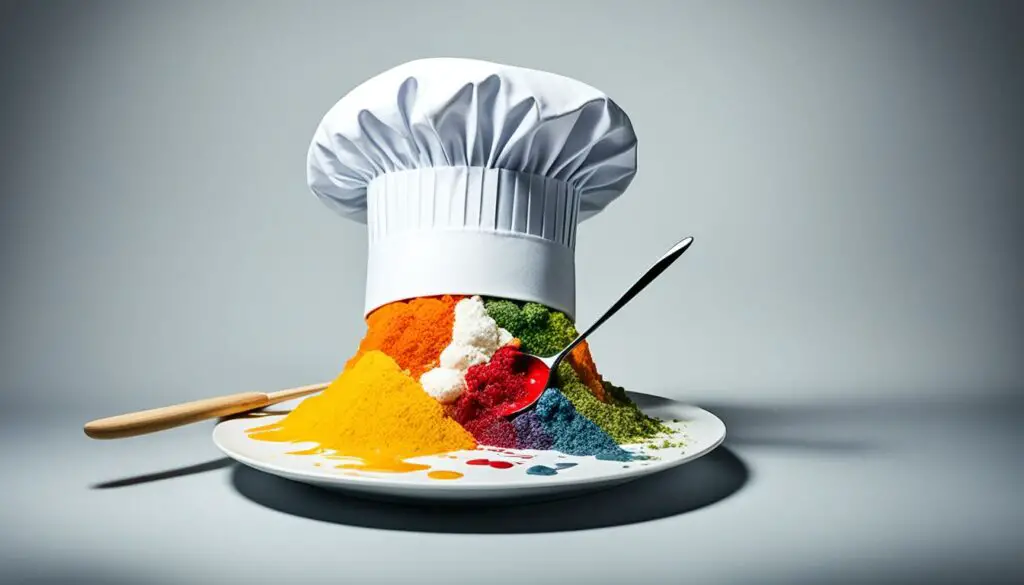
Increasing copyright education and awareness of recipe copyrights is crucial in addressing recipe plagiarism and promoting respect for recipe creators. Many individuals may not be aware of the legal aspects surrounding recipe copyrights, leading to unintentional or intentional plagiarism. By advocating for copyright education and raising awareness about the importance of respecting recipe creators’ rights, the culinary community can create a culture of appreciation and acknowledgment.
Copyright education should be integrated into culinary programs, cooking schools, and online resources to equip aspiring chefs and creators with the knowledge and understanding of recipe copyrights.
Cooking schools, culinary programs, and online platforms should prioritize copyright education to promote a strong understanding of recipe copyrights and the consequences of recipe plagiarism. By providing aspiring chefs and recipe creators with the necessary knowledge, they can better protect their own creations and respect the intellectual property of others.
“Copyright education is vital in fostering a culture of respect for recipe creators. It not only protects the integrity of culinary creations but also encourages the growth of innovation and creativity in the industry.”
With proper copyright education, chefs and creators can contribute to a community that values and protects original culinary works. This, in turn, fosters a vibrant and thriving food culture that promotes creativity, innovation, and respect for recipe creators.
Conclusion
Recipe plagiarism is a pressing issue that confronts creators in the culinary industry. Although recipes themselves may not qualify for copyright protection, the accompanying literary expression, illustrations, and creative elements can be safeguarded. To protect their work, creators should prioritize presenting recipes in a unique and distinctive manner, emphasizing their own personal touch. Additionally, utilizing copyright checkers and plagiarism detection tools can help identify instances of recipe plagiarism and take appropriate action. By promoting awareness of recipe copyrights and fostering a culture of respect for recipe creators, the culinary community can uphold the integrity and originality of culinary creations.
Preventing recipe plagiarism and protecting recipe copyrights require a collective effort. Aspiring chefs, food bloggers, and cooking enthusiasts should understand the importance of acknowledging and respecting the hard work and creativity that goes into recipe creation. By embracing a culture of appreciation, we can encourage originality and discourage content theft in the culinary world. Let us come together to preserve the innovation and talent of recipe creators and safeguard the future of culinary art.
It is essential that we recognize the challenges faced by recipe creators and take proactive steps to address recipe plagiarism. As individuals, we can make a significant impact by promoting awareness of recipe copyrights, advocating for copyright education, and supporting initiatives that protect recipe creators’ rights. By actively valuing and respecting the intellectual property of recipe creators, we can create a community that thrives on originality and creativity. Let us build a culinary landscape where everyone can share their unique culinary creations without fear of plagiarism, enabling the continued growth and innovation of the culinary industry.
FAQ
Can recipes be plagiarized?
While recipes themselves are not protected by copyright, the accompanying literary expression, illustrations, and creative elements can be. Plagiarizing these elements without permission is considered recipe plagiarism.
How can I prevent recipe plagiarism?
To prevent recipe plagiarism, focus on presenting your recipes in a unique and creative manner. Utilize copyright checkers and plagiarism detection tools to monitor and identify any instances of copied or duplicate content.
What are the consequences of recipe plagiarism?
Recipe plagiarism can lead to a loss of readership and potential revenue for the original creators. It undermines the hard work, creativity, and innovation of recipe creators and can damage their reputation.
How can I protect my recipe copyrights?
While recipes themselves may not be eligible for copyright protection, the accompanying literary expression, illustrations, and descriptions can be. Emphasize your creative expression and use original images to add an extra layer of protection.
Are there challenges in proving recipe plagiarism?
Yes, proving recipe plagiarism can be challenging due to the subjective nature of recipe writing and the ability of plagiarists to alter and modify the original work. Concrete evidence of copied recipes, words, or images may be difficult to provide.
What are the best practices for recipe writers and bloggers to avoid plagiarism?
Some best practices include presenting recipes in a creative and unique manner, using original images and illustrations, and utilizing copyright checkers and plagiarism detection tools to identify instances of copied content.
Are individual recipes protected under copyright in cookbooks?
Copyright protection for cookbooks extends to the selection, arrangement, and coordination of the included recipes, but not to the individual recipes themselves. Copying an individual recipe from a cookbook may not be considered copyright infringement.
How important is copyright education and awareness in addressing recipe plagiarism?
Copyright education and awareness play a crucial role in addressing recipe plagiarism. By raising awareness about recipe copyrights and promoting respect for recipe creators’ rights, the culinary community can create a culture of appreciation and acknowledgment.
How can creators safeguard their culinary creations?
Creators can safeguard their culinary creations by emphasizing unique presentation, utilizing copyright checkers and plagiarism detection tools, and promoting awareness of recipe copyrights to deter potential plagiarists.
What is the role of creative expression in protecting recipes?
While the basic ingredients and directions of a recipe may not be copyrightable, the accompanying description, explanation, and illustrations can be subject to copyright protection. By focusing on the creative aspect of recipe writing, creators can create a distinct identity for their culinary creations and defend against recipe plagiarism.
Are there copyright protection challenges specific to recipe plagiarism?
Yes, there is a lack of legal aid specifically tailored to recipe plagiarism, making it more challenging for creators to pursue legal action. The subjective nature of recipe writing and the ability of plagiarists to modify the original work further contribute to the underaddressed nature of this issue.
How can recipe creators ensure their work is attributed to them?
Recipe creators can ensure their work is attributed to them by using their creativity to make their recipes unique and distinguishable from others. They can also utilize copyright checkers and plagiarism detection tools to monitor and identify instances of recipe plagiarism.


